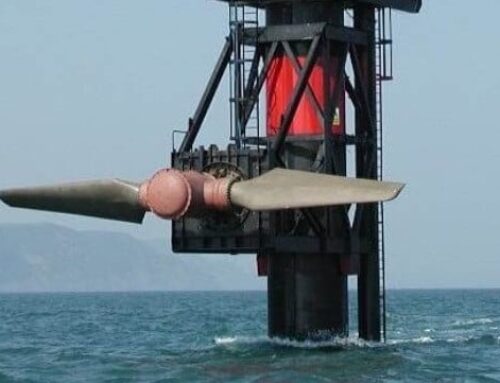Managing blackouts in the age of electricity
June 8, 2025
Energy has been a decisive force in the development of civilization since the dawn of human history. With the Industrial Revolution, the demand for energy increased exponentially. The invention of steam engines and motors paved the way for the widespread use of fossil fuels such as oil, coal and natural gas. During the world wars, humanity was introduced to nuclear energy, and more recently, it has turned to renewable energy sources to combat climate change and reduce environmental damage. In short, the discovery of alternative energy sources has laid the foundation for our modern, high-energy world by providing more efficient means of heating, lighting, mechanical power and transportation.
New leader in energy: Electricity
Dependence on energy continues to grow due to the impact of technological innovations brought about by global trade, competition and industrial revolutions. According to sources such as the United Nations Environment Programme (UNEP) and the International Energy Agency (IEA), global energy production has tripled over the past 50 years. Similarly, BP’s Energy Outlook 2024 Statistics show that global energy consumption has more than tripled, rising from approximately 57,000 TWh in 1970 to over 180,000 TWh today.
The share of electricity in global energy consumption has been steadily increasing, particularly in recent years. According to the IEA’s “Global Energy Review 2025” report, global energy demand rose by 2.2% in 2024, nearly doubling the average annual growth rate. This increase was largely driven by a 4.3% growth in global electricity consumption. The primary reasons for this increase include increased cooling needs due to record-breaking temperatures, industrial growth, the electrification of transportation, and digitalization processes such as artificial intelligence and data centers.
According to the IEA, global electricity consumption is expected to grow at an average annual rate of nearly 4% between 2025 and 2027. This increase also means that over the next three years, the world’s electricity consumption will increase by more than Japan’s total consumption.
Furthermore, the IEA’s “Net Zero Emissions” scenario predicts that the share of electricity in final energy consumption will rise from the current 20% to around 50% by 2050, indicating that electricity demand will continue to grow and that electrification will play a central role in the decarbonization of energy.
Electrification plays a key role in reducing energy demand and emissions through the transition of fossil fuel-dependent sectors (such as transportation, industry, and heating in buildings) to electricity-powered technologies. Electric vehicles and heat pumps are particularly highlighted as key elements of this transition.
Secure energy supply
Modern life’s critical dependence on electricity has made supply security a strategic priority. Energy security refers to the uninterrupted availability of energy in sufficient quantities, at acceptable prices, and through environmentally responsible means. However, the concentration of fossil fuel reserves in specific geographical regions poses significant risks to global energy security. Therefore, factors such as geopolitical tensions, supply chain disruptions, and market fluctuations are recognized as having the potential to disrupt energy supplies.
On the other hand, the effects of climate change, the most significant environmental issue of our time, also directly impact energy security. In particular, extreme weather events (drought, frost, storms) can reduce the reliability of both fossil fuel-based energy production (such as frozen natural gas pipelines) and renewable energy sources (such as frozen wind turbines, low hydroelectric production, and reduced solar panel efficiency).
The widespread adoption of renewable energy sources, which play a critical role in combating climate change, also brings with it certain technical and operational challenges. In particular, the intermittent nature of renewable energy (such as the cessation of solar energy at night, fluctuations in wind speed, or drought periods affecting hydroelectric production) makes it difficult to balance energy grids.
Iberian Peninsula power outage
On April 28, 2025, a large-scale power outage in parts of Europe, primarily in Spain, France and Portugal, demonstrated the serious consequences that such difficulties can have. This outage, which lasted 23 hours in the Iberian Peninsula, affected millions of people and caused Spain’s economy to lose over 150 billion euros.
There are certain challenges associated with the use of renewable energy sources, which play an active role in combating climate change. The intermittency of renewables, (such as the sun setting, the wind stopping, or insufficient rainfall) creates new challenges for grid stability.
Experts note that one of the main causes of the outage was Spain’s heavy reliance on solar energy for electricity production and the grid’s inability to compensate for a sudden drop in production. This incident has once again highlighted the vital importance of developing energy storage systems (advanced battery technologies, hydrogen storage, etc.) and smart grid infrastructure. Investments in storage solutions, grid flexibility and international energy integration must be accelerated to enhance the reliability of renewable energy sources.
Organizations such as the IEA view the transition of the global energy system away from fossil fuels toward renewable and clean energy sources as a strategic necessity to meet growing energy demand and combat climate change. However, the grid infrastructure must adapt to this change and increase its flexibility.
Türkiye’s energy demand
With increasing industrialization, urbanization and population growth, Türkiye’s electricity demand has nearly tripled over the past 20 years, reaching 350 TWh as of 2024. This demand is projected to increase by more than 50% by 2035, reaching 510 TWh. Such a rapid increase necessitates not only an expansion of production capacity but also a transformation of the energy infrastructure.
Although renewable sources account for 60% of our installed capacity, their share in production remains at 40-45% due to their nature. This situation necessitates flexibility in energy grids and the widespread use of energy storage technologies to ensure a balance between production and consumption. Especially in today’s world, where the effects of the climate crisis are being felt more frequently and intensely, energy supply security must be considered alongside climate resilience.
Widespread power outages affecting the Iberian Peninsula, which even advanced economies are powerless to prevent, are no longer merely technical failures; they have become a strategic issue that highlights the fragility of energy systems and the direct effects of climate change. Therefore, transitioning to a climate-resilient, flexible, diversified and low-carbon energy system is indispensable for both national energy security and Türkiye’s “2053 Net Zero Emissions” target.
In conclusion, the widespread adoption of electrification, the establishment of smart grids, the improvement of energy efficiency, and the integration of renewable energy will be our strongest responses to both today’s energy supply challenges and tomorrow’s climate risks.
Search
RECENT PRESS RELEASES
Related Post




